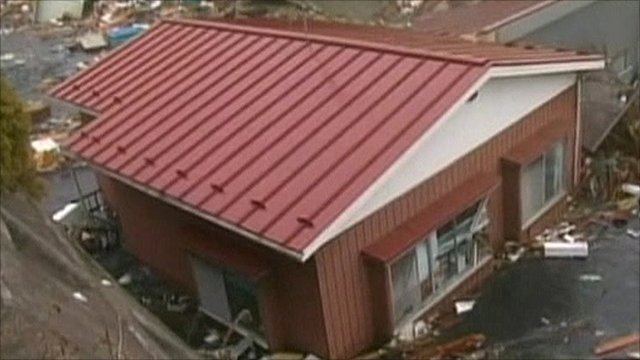 Technicians are battling to lower pressure in a second nuclear reactor at Japan's quake-hit Fukushima power plant where radiation levels are rising.
Technicians are battling to lower pressure in a second nuclear reactor at Japan's quake-hit Fukushima power plant where radiation levels are rising.
Officials say reactor 3 has lost its emergency cooling system. A similar problem led to a major explosion at reactor 1 at the plant on Saturday.
About 170,000 people have been evacuated from the area near the plant.
Meanwhile, police have warned that the death toll in tsunami-hit Miyagi prefecture alone could exceed 10,000.
Officials previously said that more than 2,000 people died or were missing following Friday's earthquake and tsunami.
Millions remain without electricity and authorities are stepping up relief efforts as the scale of the tragedy becomes clearer.
The BBC's Rachel Harvey, who is north of the city of Sendai, says piles of debris and vehicles have been strewn over a wide area by the tsunami, with the roofs of houses poking through in places.
Officials announced that the number of troops helping with rescue work in the region would be doubled to 100,000.
Radioactive vapour
The Japanese government has sought to play down fears of a radiation leak at the Fukushima plant.
But the plant's operators, Tokyo Electric Power (Tepco), said radiation levels around the plant had now risen above permissible limits.
Government spokesman Yukio Edano acknowledged it was possible that a meltdown had occurred at reactor 3.
The BBC's Chris Hogg in Tokyo says a meltdown at reactor 3 would be potentially more serious than at the other reactors, because it is fuelled by plutonium and uranium, unlike the other units which carry only uranium.
Experts say as long as authorities can keep fuel rods in the core covered with water, they should be able to avoid a major disaster.
Emergency workers were pumping in seawater to cool the rods, but one report suggested the tops of the rods had briefly been exposed.
Technicians opened valves at reactor 3, allowing small amounts of radioactive vapour to escape in a bid to reduce the pressure in the unit.
They performed a similar operation on the first reactor, hours before the explosion that wrecked the building it was housed in.
The Japanese government doubled the size of the evacuation zone around Fukushima 1 to 20km (12.4 miles) after the blast.
Scenes of devastation
The tsunami that followed the 8.9-magnitude earthquake wreaked havoc along a huge stretch of Japan's north-east coast, sweeping far inland and devastating a number of towns and villages. Powerful aftershocks are continuing to hit the region.
The BBC's Damian Grammaticas, in Sendai, says the scenes of devastation are astonishing.
He says giant shipping containers have been swept inland and smashed against buildings. Food, fuel and water are running out in the city.
The town of Rikuzentakada, Iwate prefecture, was almost completely submerged. Japanese broadcaster NHK reported that soldiers had found hundreds of bodies there.
NHK reports that in the port of Minamisanriku, Miyagi, authorities say that about 7,500 people were evacuated to 25 shelters after Friday's quake but they have been unable to contact the town's other 10,000 inhabitants.
A local official in the town of Futaba said more than 90% of the houses in three coastal communities had been washed away by the tsunami.
"The tsunami was unbelievably fast," said Koichi Takairin, a 34-year-old lorry driver who was inside his four-ton vehicle when the wave hit Sendai.
"Smaller cars were being swept around me. All I could do was sit in my truck," he said.
More than 215,000 people are said to be living in 1,350 temporary shelters in five prefectures.
International disaster relief teams are being sent to Japan, with the UN helping to co-ordinate the operation.
President Barack Obama has pledged US assistance. One US aircraft carrier that was already in Japan will help with rescue and relief efforts and a second is on its way.
Japan's worst previous earthquake was of 8.3 magnitude and killed 143,000 people in Kanto in 1923. A magnitude 7.2 quake in Kobe killed 6,400 people in 1995.



